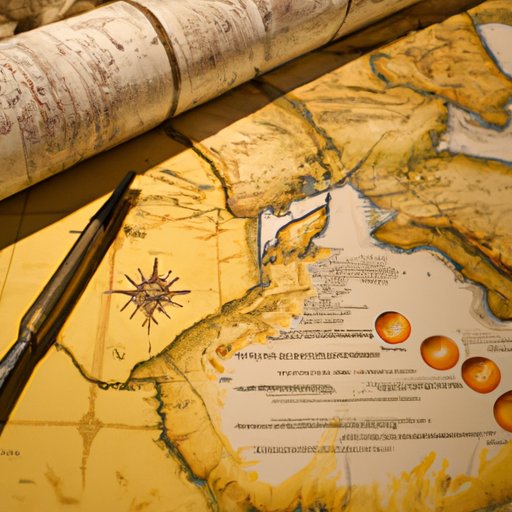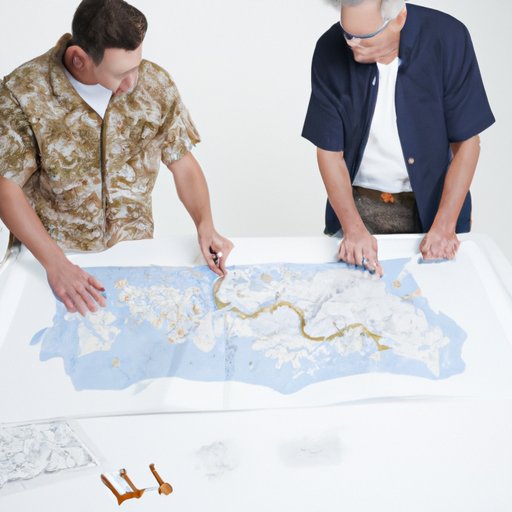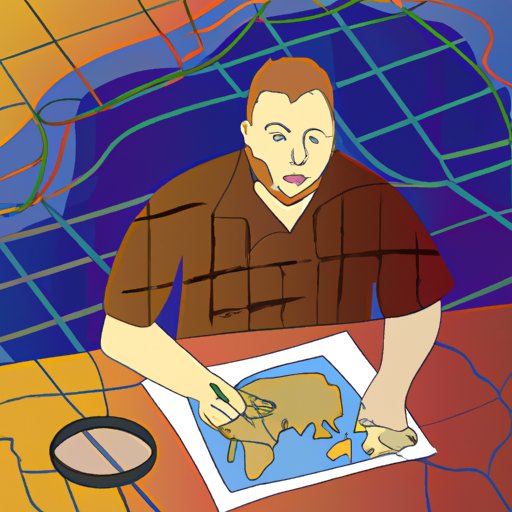Introduction
Mapmaking is the art and science of creating a representation of a region or area of land on a flat surface, usually a paper or digital map. It combines elements of geography, surveying, drawing, and mathematics to create a visual representation of an area. The science of mapmaking involves the application of scientific principles and data analysis to create a detailed and accurate representation of an area.
Exploring the Science Behind Mapmaking
At the heart of the science of mapmaking is the field of cartography. Cartography is the study and practice of making maps and includes the use of various methods, technologies, and tools to create a map. Cartographers use geographic information systems (GIS), remote sensing, aerial photography, statistical analysis, and other data sources to create a map. These maps are then used for various purposes, such as navigation, exploration, planning, and more.
An Overview of Cartography and its Scientific Principles
Cartography is based on the core principles of geometry, projection, scale, and accuracy. Geometry deals with the shape of an area and how it is represented on a map. Projection is the process of transforming a three-dimensional area into a two-dimensional map. Scale is the ratio between the size of an object on the map and its real-world size. Accuracy is the degree to which a map accurately reflects the features of an area.
In addition to these core principles, cartographers also use spatial analysis, a method of analyzing data to determine relationships between different points and areas. For example, a cartographer may analyze population data to create a map that shows population density in an area. This type of analysis allows cartographers to create more detailed and useful maps.

The History and Evolution of Mapmaking
Mapmaking has been around for thousands of years, and its history can be traced back to ancient Babylonian and Egyptian civilizations. Maps were used for navigation and exploration, but they were also used for political and religious purposes. Over time, mapmaking techniques and technologies have evolved, allowing for more detailed and accurate maps.
In the 1700s, surveyors and cartographers began using mathematical formulas to create maps. This led to the development of the first topographic maps, which showed elevation changes in an area. In the 19th century, advances in printing technology allowed for large-scale map production, and maps quickly became essential tools for navigation.
Today, mapmaking has become even more sophisticated. With the advent of satellite imagery, GIS, and other technologies, cartographers can create incredibly detailed and accurate maps.

Investigating the Technology Used in Modern Mapmaking
Modern mapmaking relies heavily on technology. Cartographers use GIS software to collect, store, and analyze data about an area. They then use this data to create a digital map, which can be printed or displayed online.
GIS software allows cartographers to incorporate multiple layers of data into the map. For example, a cartographer may include layers for roads, buildings, vegetation, population density, and other features. This allows them to create detailed and informative maps that can be used for various purposes.
In addition to GIS software, cartographers also use aerial photography, satellite imagery, and other data sources to create a map. By combining these different sources of data, cartographers can create incredibly detailed and accurate maps.

Examining the Complex Process of Map Creation
Creating a map is a complex process that involves many steps. First, a cartographer must choose a map scale and decide what features to include on the map. Then, they must gather data from various sources, such as aerial photography and GIS software. Once the data has been collected, the cartographer must analyze it and decide how best to represent it on the map. Finally, the cartographer must create the map using specialized software.
The entire process of map creation requires a great deal of skill and knowledge. Cartographers must be able to interpret data, understand the principles of cartography, and use specialized software to create a map. It is a combination of art and science, and it takes years of practice to master the craft.
Understanding the Art and Science of Mapmaking
Mapmaking is both an art and a science. Cartographers must combine artistic skills with scientific principles to create a map that accurately and effectively conveys information about an area. This requires a deep understanding of the principles of cartography, as well as the ability to interpret and analyze data. It is a complex process that requires a great deal of skill and knowledge.
Conclusion
Mapmaking is an art and science that combines elements of geography, surveying, drawing, and mathematics to create a visual representation of an area. At its core, the science of mapmaking involves the application of scientific principles and data analysis to create a detailed and accurate representation of an area. Cartographers use GIS software, aerial photography, satellite imagery, and other data sources to create a map. The entire process of map creation requires a great deal of skill and knowledge. Mapmaking is both an art and a science, and it takes years of practice to master the craft.
The science of mapmaking is essential for navigation, exploration, planning, and many other applications. Maps help us better understand our world and make informed decisions about how to use and manage resources. Applying the science of mapmaking can have numerous benefits, including improved safety and efficiency.
(Note: Is this article not meeting your expectations? Do you have knowledge or insights to share? Unlock new opportunities and expand your reach by joining our authors team. Click Registration to join us and share your expertise with our readers.)
